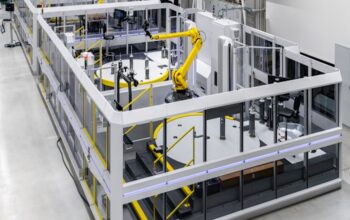As the trend toward achieving better precision and control in metrology and nano metrology applications continues, the need for nanometer-capable stages is rising tremendously.
Innovative sensor technologies have increased measurement sensitivity, allowing for the identification and characterization of minute characteristics and sample variations. Motion control stages that can move the samples or sensors with incredibly fine accuracy and stability are necessary to realize the full potential of these sophisticated sensors.
For research, quality control, and manufacturing operations that call for intricate measurements and minute modifications, the capacity to move several hundred millimeters while preserving nanometer-level accuracy offers up new possibilities. In order to meet the requirements of contemporary metrology and enable further improvements in a number of industries, the development of nanometer-capable stages has become essential.
The findings of the measurement can be considerably impacted by any motion accuracy or error. The overall accuracy of the readings can be jeopardized by even little variations or vibrations caused by the movement of the sensors.
“Motion systems must be designed with great precision and stability to meet this challenge. They must be able to maintain tight tolerances and sub-nanometer resolution over the whole range of motion. These high-precision motion systems ensure that the measurements obtained are not constrained or compromised by the motion itself by outperforming the accuracy of the sensors, allowing researchers and industries to achieve the highest level of measurement accuracy possible, according to Bill Hennessey, president of ALIO Industries.
ALIO offers its monolithic XY bases and vertical Z-stages for such applications. Z-stages from ALIO are notable for their cutting-edge design, providing a vertical solution that is entirely linear-based and offers performance on par with air-bearing systems.
Hennessey says, “The extraordinary precision of ALIO’s Z-stage distinguishes it from conventional Z-wedge solutions by an order of magnitude. This indicates that in vertical positioning applications, our Z-stage can attain levels of accuracy and stability never before possible.
The innovative ALIO design ensures consistent and reliable vertical movement with sub-nanometer resolution, doing away with the drawbacks of conventional Z-wedge mechanisms like non-linearity and mechanical hysteresis. This opens up new opportunities for nano-metrology applications, nanotechnology, semiconductor manufacturing, and optics manufacturing, allowing OEMs to achieve levels of performance that were previously unattainable with conventional solutions.
The customer’s payload can be mounted directly on the top of the stage in line with the motor, encoder, bearings, and counterbalance when using a vertical Z-stage on a monolithic XY base. This minimizes overhanging brackets and greatly reduces potential Abbé errors (optical distortions caused by a difference in focal lengths for different wavelengths of light, resulting in color fringing and decreased image sharpness).
To reduce measurement uncertainty for metrology OEMs, ALIO’s XY monolithic stages offer previously unheard-of straightness and flatness of travel with nanometer precision. This ensures more precise and reliable measurement data, which is essential for quality control, research, and next-generation manufacturing processes.
Credits: Alio Industries
Click on the following link Metrologically Speaking to read more such blogs about the Metrology Industry.









